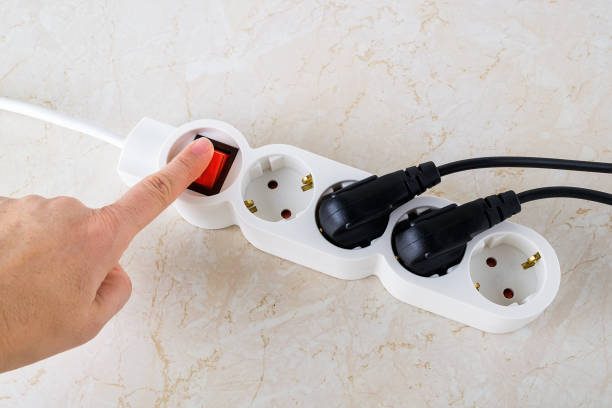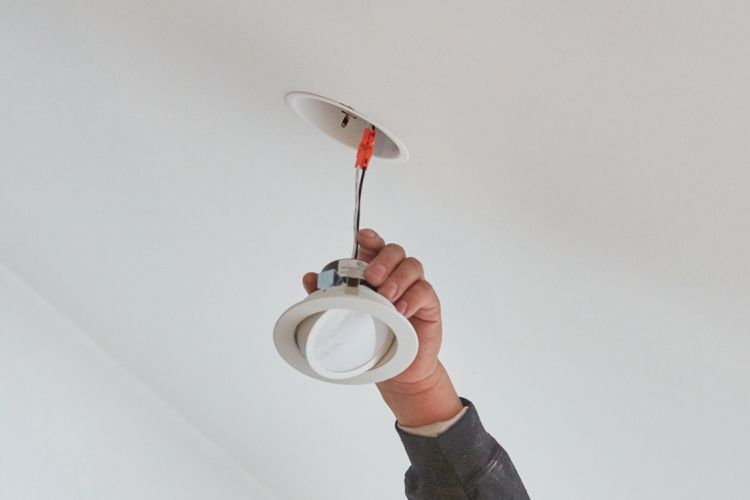
Explore common reasons why LED lights won’t turn on, from faulty wiring and incorrect installations to dead bulbs and power […]

Recessed lighting has become a popular choice for homeowners and designers, offering a sleek and modern way to brighten up living spaces.
One of the main decisions when considering recessed lighting is whether to go with traditional can lights or opt for the newer canless alternatives. In this article, we’ll explore the pros and cons of can vs. canless recessed lighting to help you make the right choice for your home.
LED Brilliance Starts Here, Just $33. Shine Brighter, Save More!
Our Team of Experts Will Guide You Through The ESS Lighting Upgrading Process To Ensure You Achieve The Most Effective Energy Efficient Improvement Possible, GUARANTEED!
A Brighter Home, A Brighter Future!
Can lights, also known as recessed cans or pot lights, have been a staple in lighting design for decades. These fixtures consist of a housing, which is the can itself, and a trim that sits flush with the ceiling. Let’s delve into the advantages and drawbacks of can recessed lighting.

➜ Versatility
Can lights are versatile and can accommodate various types of bulbs, including incandescent, LED, and CFL. This flexibility allows homeowners to choose the type of lighting that best suits their needs.
➜ Heat Dissipation
The can housing provides a barrier that helps dissipate heat generated by the light bulb. This can be beneficial for preventing overheating and extending the lifespan of the bulb.
➜ Easy Upgrade
Traditional can lights are relatively easy to upgrade or retrofit with newer, more energy-efficient bulbs or technologies as they become available.
➜ Installation Complexity
Installing can lights can be complex, requiring additional space above the ceiling for the housing. This may be a challenge in homes with limited ceiling-to-floor space.
➜ Airflow Restrictions
The housing of can lights can limit airflow in the ceiling, potentially causing insulation and ventilation issues. This can contribute to increased energy costs and may affect the overall energy efficiency of your home.
➜ Limited Design Options
The design of can lights is somewhat limited compared to canless alternatives. The visible trim may not offer the sleek, minimalist look that some homeowners desire.

Canless recessed lighting represents a more recent innovation in the world of lighting design. These fixtures forgo the traditional can housing, offering a more streamlined and contemporary appearance. Let’s explore the advantages and disadvantages of canless recessed lighting.
➜ Space Efficiency
Canless recessed lights are compact and do not require additional space above the ceiling. This makes them an ideal choice for homes with limited clearance.
➜ Improved Ventilation
With no housing to impede airflow, canless recessed lights contribute to better ventilation and insulation efficiency in the ceiling which can result in energy savings over time.
➜ Sleek Design Options
Canless lights often feature a trimless design, providing a modern and clean aesthetic that appeals to those who prefer a minimalist look. The absence of visible trims can create a seamless integration with the ceiling.
➜ Heat Management
Without a dedicated housing, canless recessed lights may be more susceptible to heat buildup, which could affect the performance and lifespan of the bulbs.
➜ Limited Upgrade Options
Upgrading or retrofitting canless recessed lights can be more challenging compared to traditional can lights. The lack of a housing may limit the types of bulbs that can be used.
➜ Installation Challenges
While canless lights are generally easier to install than can lights, the process may still pose challenges, particularly for those unfamiliar with electrical work.
The choice between can and canless recessed lighting ultimately depends on your specific needs, preferences, and the characteristics of your home. Can lights offer a long-established, versatile option with proven heat dissipation capabilities.
On the other hand, canless lights provide a modern, space-efficient alternative with a sleek design.
Consider factors such as installation complexity, design preferences, and the importance of airflow.
Whether you opt for the traditional reliability of can lights or the contemporary appeal of canless alternatives, both options can significantly enhance the overall ambiance and functionality of your living space.